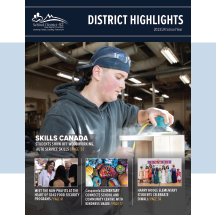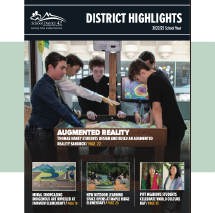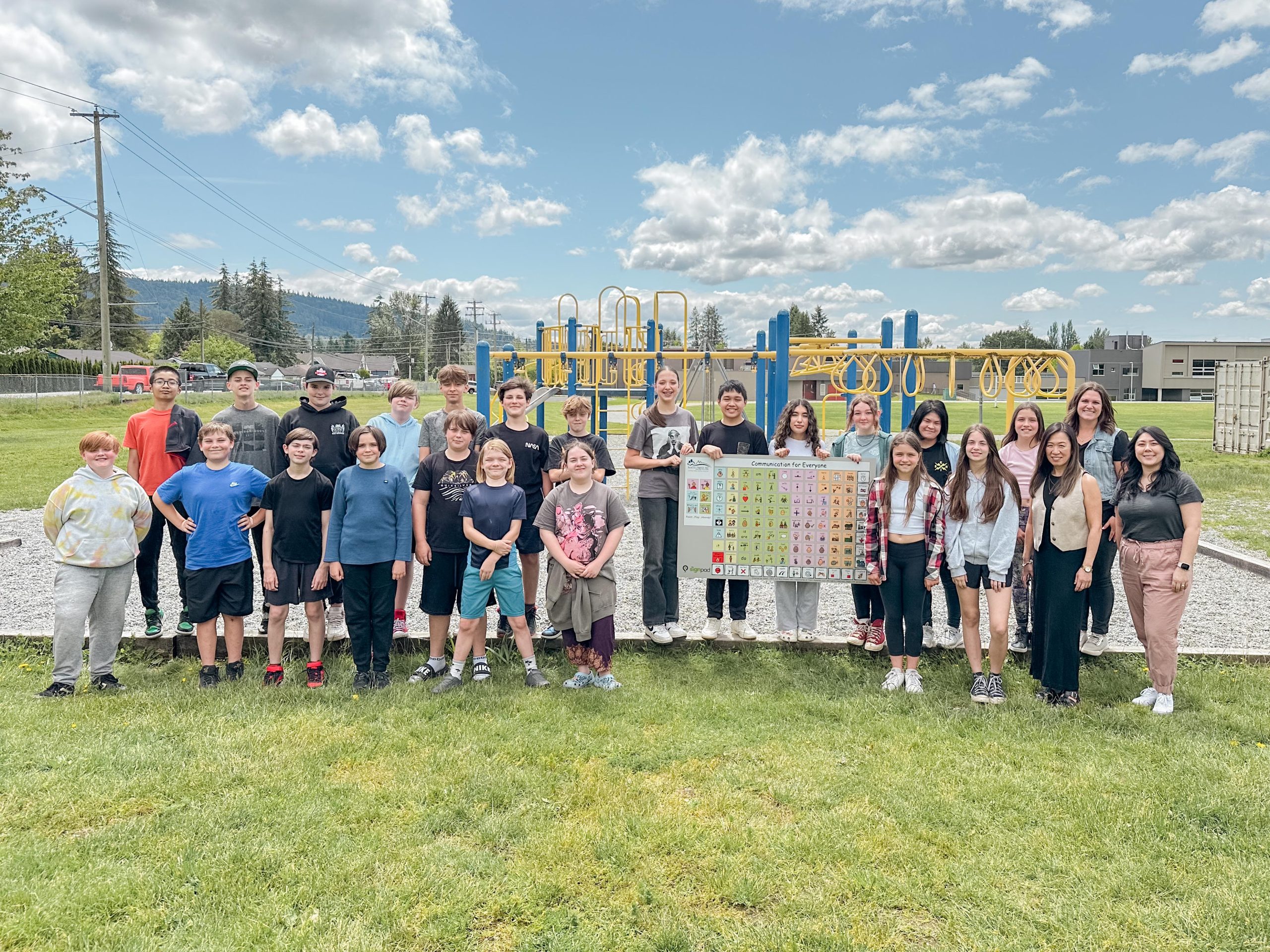Grade 7 students at Blue Mountain Elementary have installed communication boards around the school to support children who have difficulties speaking or communicating.
The group put up communication boards in every classroom and on both school playgrounds as part of their inquiry project.
“Communication is essential for everybody and doesn’t have to be just from talking,” said Grade 7 student Hajir. “I have way more knowledge than before about many different disabilities, as well as different types of communication boards. I’m so honoured I get to do this, and it feels good to try and make a difference in the community.”
A communication board is a low-tech assistive tool that displays symbols, images and words that children can point at or touch to form sentences and communicate with those around them. The boards put up at the playgrounds, for example, include pronouns, nouns, verbs and phrases that target play-specific activities.
“Through this inquiry project, I learned how many kids aren’t able to communicate through their words,” said Sydney, who is a student in the class.
“Making this communication board helped me understand the importance and the connection it can provide,” added Arianna, another student.
The idea for the project came from lessons about communication in Cassie Tripp’s Grade 6/7 class, in collaboration with support teacher Julia Tchoi and Danielle Bigiolli, speech and language pathologist.
“The students learned about what goes into making a ‘core’ board, such as understanding what core versus fringe words are, and identifying what messages are most important to have access to,” Bigiolli explained. “They learned about why it is so important to support all types of communication, not just verbal.”
After learning about diverse communication needs, the students came up with an action plan to make a difference.
“If we all work together, we can make the world a welcoming and supportive place,” said Grade 7 student Victoria, and that’s what they hoped to do at the school with the boards.
The students went into different classes and taught lessons on the subject and installed communication boards in the classrooms. They then looked at the school’s communal areas and identified the playgrounds as high traffic areas that would benefit from the addition of communication boards for accessibility.
“Both playground areas are used by our students who require communication supports, so they were a natural fit for this project,” Tchoi said.
The students looked into different designs for the playground communication boards and ended up going with a design that had already been put together for Fairview Elementary, as it fit their vision for the space. They fundraised the money to purchase the large outdoor boards and installed them one month later.
“I hope that other districts and schools take this as an example for their schools, and that we have a positive impact on the future,” said Timothy, a student in the class.
Watching the students bring their vision to life was inspiring for the teachers.
“They truly delivered the essential message that communication is a right that everyone deserves access to,” Tchoi said. “These boards are a legacy of values and beliefs that I know these students will continue to spread.”
Bigiolli agreed, noting this is the first step in making a difference.
“My hope is that the more we can educate this generation around communication diversity, the more normalized alternative communication becomes,” she explained.
Tripp says she’s proud of her students and hopes they can see the positive impact their efforts are having on the school community and will continue to have for years to come.
“They can be the voice of change,” she said.



